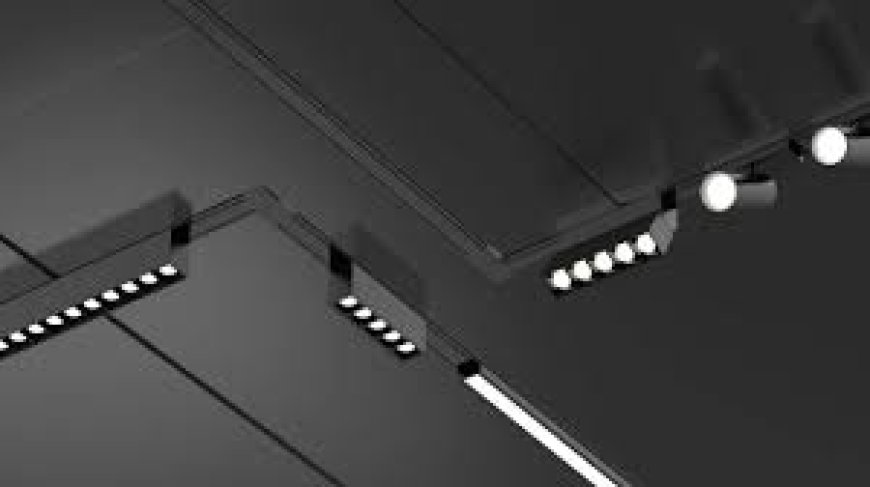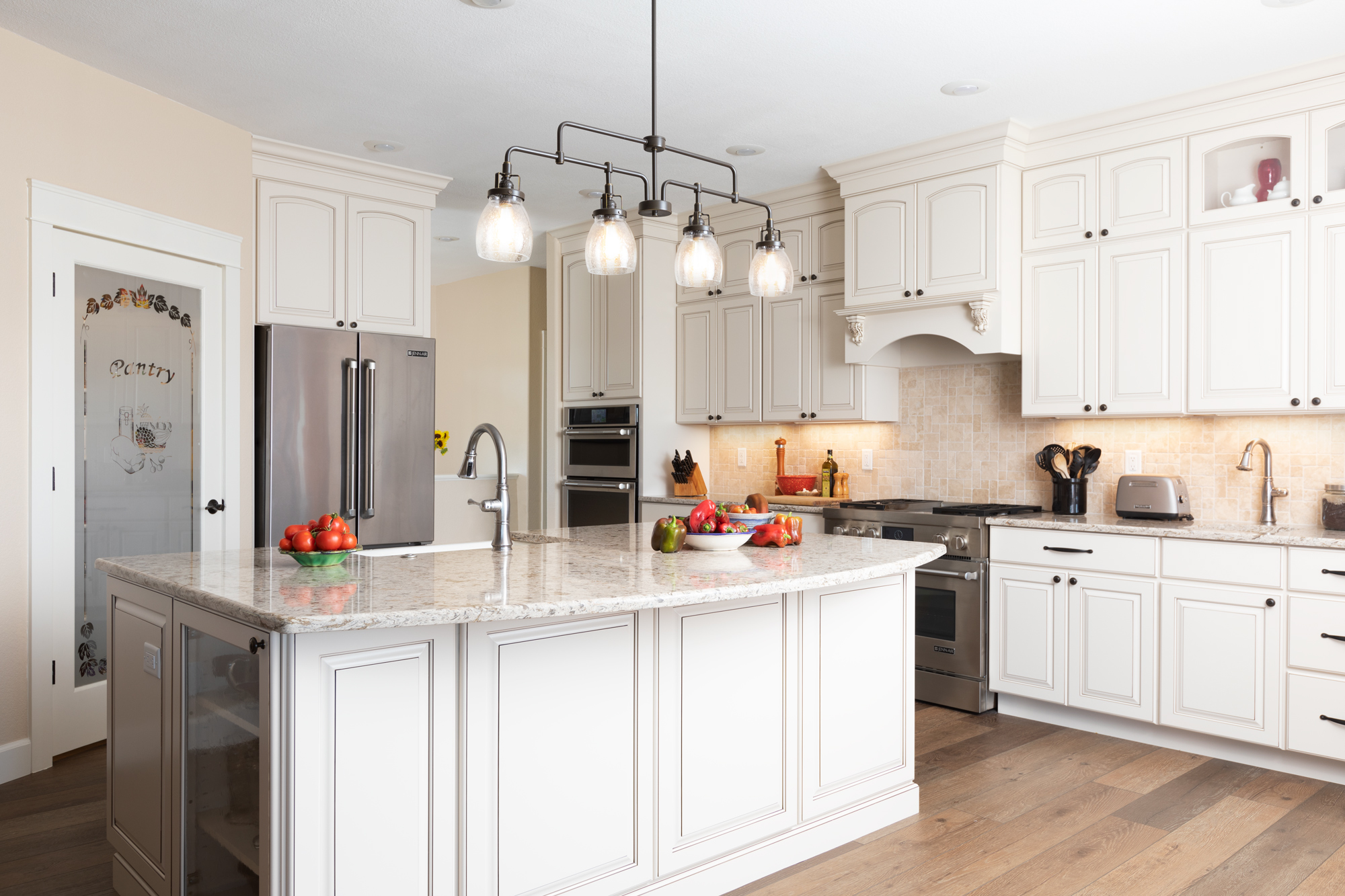The Complete Guide to Magnetic Track Lighting
Discover the complete guide to magnetic track lighting, exploring its benefits, installation tips, and design ideas for modern lighting solutions. Perfect for any space!

Magnetic track lighting systems have become a leading choice for modern interior and commercial spaces. Their sleek design, versatility, and ease of use make them a favorite among homeowners and designers. This guide explores everything you need to know about magnetic track lighting: what it is, how it works, its components, applications, and tips for choosing the right system for your needs.
What is Magnetic Track Lighting?
Magnetic track lighting is an innovative lighting solution that uses magnetic connections to attach light fixtures to an aluminum track. Unlike traditional lighting systems that require screws or tools, magnetic track lights can be easily installed, moved, or rearranged. This flexibility makes them ideal for dynamic spaces where lighting needs frequently change.
The system consists of a track made from aluminum, copper conductors, and iron sheets. Light fixtures equipped with magnets securely attach to the track. At the same time, these magnets enable an electrical connection with the copper conductors to power the lights. A transformer converts the input voltage (typically AC110-220V) into a safe output of DC48V, ensuring energy efficiency and safety.
Magnetic tracks can be connected in various configurations, such as L-shapes, U-shapes, or square patterns, allowing for creative lighting designs tailored to the space.
How Does Magnetic Track Lighting Work?
The system relies on three main elements:
-
Magnetic Connection: The light fixtures have built-in magnets that securely hold them in place on the track.
-
Electrical Conduction: Copper conductors within the track supply power to the fixtures when they are attached.
-
Transformer: A transformer converts the high-voltage alternating current (AC) to low-voltage direct current (DC), which powers the lights efficiently.
This combination of magnetic attachment and electrical conduction makes the system easy to install and adjust, even without professional help.
Why is Magnetic Track Lighting Popular?
The popularity of magnetic track lighting lies in its blend of style and functionality. These systems offer:
-
Aesthetics: With their sleek, minimalist design, they complement modern interiors.
-
Flexibility: Lights can be moved, added, or removed without rewiring.
-
Customizability: Tracks can be arranged in various shapes, and a wide range of light fixtures is available.
-
Energy Efficiency: LED lights and low-voltage transformers reduce energy consumption.
Components of a Magnetic Track Lighting System
A magnetic LED Track Light System system consists of several key components:
-
Magnetic Tracks:
-
Tracks come in various sizes, with 20mm and 35mm widths being the most common.
-
Installation options include recessed tracks (flush with the ceiling), surface-mounted tracks (installed directly on the ceiling), and suspended tracks (hanging from the ceiling for a decorative effect).
-
Light Fixtures:
-
Magnetic LED lights include spotlights, linear lights, and pendant lights.
-
Spotlights offer focused beams for highlighting artwork or specific areas.
-
Linear lights provide uniform illumination for general lighting.
-
Pendant lights add a decorative touch and are ideal for dining tables or kitchen islands.
-
Accessories:
-
Accessories like connectors, power cables, and end caps are essential for completing the system.
-
Connectors allow you to join multiple tracks to create customized shapes.
-
Drivers (built-in or external) regulate the voltage to ensure consistent performance.
Applications of Magnetic Track Lighting
Magnetic track lighting is versatile and can be used in various settings, including:
1. Residential Spaces
-
Living Rooms: Create a cozy and modern atmosphere with adjustable lighting patterns.
-
Bedrooms: Use warm white lights for a relaxing ambiance.
-
Kitchens: Install task lighting over countertops or islands for better visibility.
-
Dining Rooms: Highlight the dining table with pendant lights for an elegant look.
2. Commercial Spaces
-
Offices: Enhance productivity with adjustable lighting for different tasks.
-
Retail Stores: Highlight products with spotlights or create an inviting atmosphere with linear lights.
-
Galleries: Use focused beams to draw attention to artwork or exhibits.
3. Other Uses
-
Magnetic track lighting is also suitable for restaurants, hotels, and public spaces, where design flexibility and energy efficiency are crucial.
How to Choose the Right Magnetic Track Lighting System
Selecting the right magnetic led track light system involves several steps:
-
Plan the Design:
-
Decide on the layout and shape of the track (e.g., L-shape, U-shape, or square).
-
Consider the space’s size and purpose to determine the ideal track arrangement.
-
Select the Track Type:
-
Choose recessed tracks for a seamless look, surface-mounted tracks for easy installation, or suspended tracks for decorative purposes.
-
Pick the Light Fixtures:
-
Determine the type of lighting you need. Use spotlights for focused illumination and linear lights for general lighting.
-
Consider beam angles. A 24° angle provides narrow, focused light, while a 120° angle offers broader coverage.
-
Choose Accessories:
-
Ensure you have the necessary connectors, power cables, and end caps to complete the system.
-
Decide on the Driver:
-
Built-in drivers are compact and integrated into the fixtures, while external drivers are larger and installed separately.
Pros and Cons of Magnetic Track Lighting
Advantages
-
Ease of Installation: No tools or professional help are required for most setups.
-
Flexibility: Lights can be moved or rearranged without much effort.
-
Modern Design: The system enhances the aesthetic appeal of any space.
-
Energy Efficiency: LED lights and low-voltage systems consume less power.
-
Customizable: Tracks and lights are available in various sizes, shapes, and colors.
Disadvantages
-
Cost: Magnetic LED systems are generally more expensive than traditional lighting.
-
Maintenance: Damaged tracks or connectors may require professional repair.
-
Durability: Tracks must be handled carefully to avoid bending or breaking.
Cost Factors for Magnetic Track Lighting
The cost of a magnetic track lighting system depends on:
-
The quality of materials used (aluminum, magnets, and LEDs).
-
The size and type of the track.
-
The number and type of light fixtures.
-
Accessories and drivers included in the package.
Higher-end systems often feature better build quality and performance, making them a worthwhile investment for long-term use.
Tips for Maintaining Magnetic Track Lighting
-
Avoid Pressure: Do not apply excessive force when attaching or moving fixtures.
-
Clean Regularly: Dust and dirt can accumulate on the track and fixtures, affecting performance.
-
Check Connections: Ensure that connectors and cables are securely attached.
-
Use Compatible Parts: Always choose accessories and fixtures designed for your specific track system.
Conclusion
Magnetic track lighting is a game-changer in the world of interior and commercial lighting. Its combination of style, flexibility, and efficiency makes it a perfect choice for modern spaces. Whether you're designing a cozy home or a sophisticated office, this system allows you to create stunning lighting designs with ease. Consider your space, needs, and budget to select the right system and enjoy the benefits of this innovative lighting solution.
What's Your Reaction?






















